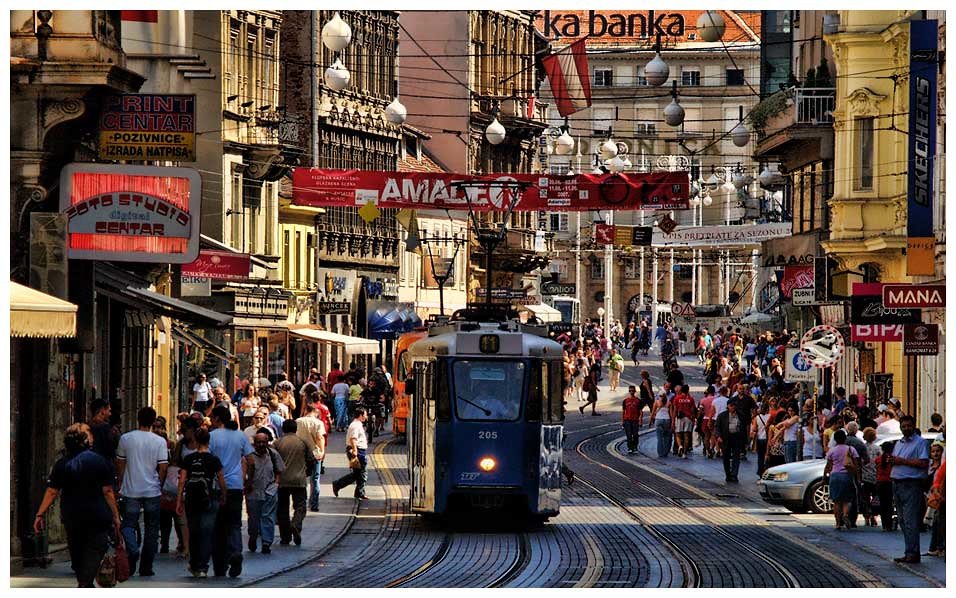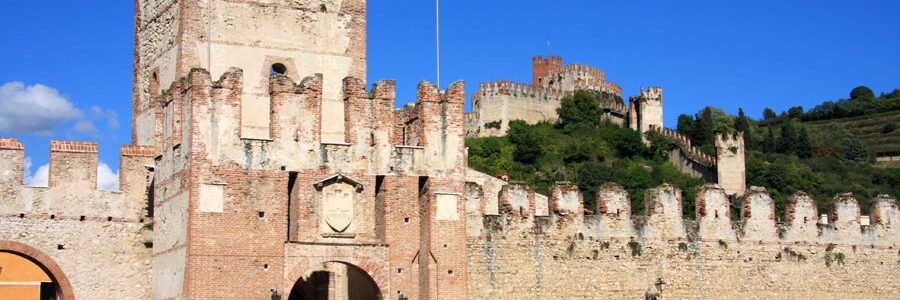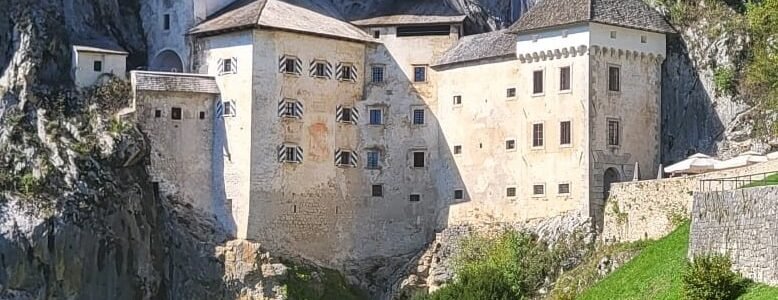How to get from
Trieste to Zagreb
How to get from Trieste to Zagreb
Quick Overview
Traveling from Trieste to Zagreb connects two distinct parts of Europe – Italy’s Adriatic coast and Croatia’s inland capital. The total distance is about 230 kilometers, with travel times ranging from 3.5 to 6 hours depending on the type of transport.
The route passes through Slovenia, offering a mix of seaside views, karst landscapes, and alpine valleys before reaching the Croatian plains. Whether you travel for business or leisure, this journey offers multiple ways to experience the region’s diversity.
Private Transfer:
A Trieste to Zagreb private trip is the fastest and most comfortable way to make the trip. Travel time is typically 2.5 hours, can vary depending on stops and traffic.
Private transfers allow you to turn the journey into a relaxed sightseeing experience. Along the way, many travelers choose to stop at Miramare Castle, just a few kilometers outside Trieste, a white 19th-century palace with panoramic sea views. Continuing east, the route passes near Škocjan Caves, a UNESCO-listed natural wonder featuring underground canyons and vast limestone halls. Before reaching Croatia, a short break in Ljubljana, Slovenia’s charming capital, offers a chance to stretch, have lunch by the river, or take a quick walk through its old town.
Vehicles used for private transfers are modern, air-conditioned, and equipped with Wi-Fi. Drivers are familiar with the route and can adapt to your schedule. This option is particularly convenient for families, business travelers, or anyone who prefers a direct, door-to-door service.
While more expensive than buses or trains, the added comfort, flexibility, and sightseeing possibilities often make it worth the difference.
Driving Yourself
Driving from Trieste to Zagreb is straightforward, and it’s an excellent choice for travelers who like to stay independent. The fastest route goes from Trieste to Sežana, continues through Ljubljana on Slovenia’s A1 motorway, and then follows Croatia’s A2 highway toward Zagreb.
The entire trip takes about 4 hours without stops. You’ll need a Slovenian vignette (€10 for 7 days) and a Croatian toll card, which usually costs around €10–12 for this section. Fuel for the trip is roughly €25-30 depending on the car.
The drive is smooth and scenic – the section between Postojna and Ljubljana passes through forested hills, while the Croatian highway offers open views of the countryside.
In winter, snow is possible near the Slovenian highlands, but roads are well maintained. In summer, the route is popular with tourists heading inland, so expect occasional slowdowns near Ljubljana.
Parking in Zagreb is easy to find in hotel garages or public lots near the center, though street parking requires prepayment.
By Train
Traveling by train between Trieste and Zagreb requires one or two connections, usually in Ljubljana. The total journey takes between 6 and 7 hours.
Tickets cost around €30-40 depending on the schedule. Trains are comfortable, with large windows, air-conditioning, and power outlets. The route from Trieste to Ljubljana offers great views of the Slovenian karst and countryside.
From Ljubljana, trains continue east through rolling hills before descending toward Croatia. It’s a peaceful, scenic ride suitable for travelers who prefer slow, steady travel without the hassle of driving.
Trains arrive at Zagreb Glavni Kolodvor, located near the city center and connected to all main tram lines.
By Bus
Buses are the most common choice for this route, with multiple departures daily. The trip usually takes about 5 to 6 hours depending on the number of stops.
Tickets start from €18, and most operators use modern coaches equipped with Wi-Fi, rest stops, and comfortable seats. Buses depart from Trieste’s main station and arrive at Zagreb Autobusni Kolodvor, which is just 15 minutes from the central square.
While it’s not the fastest option, the bus is practical, reliable, and affordable. For travelers without luggage or those looking for a direct connection, it’s a solid choice.
By Plane
There are currently no direct commercial flights between Trieste and Zagreb, as the distance is too short for regular air service. Travelers who prefer flying can technically connect through Vienna or Rome, but total travel time exceeds six hours, making it impractical.
However, both cities have international airports with car rental and shuttle options. Many visitors arriving by plane in Trieste choose to continue by car or transfer directly to Slovenia or Croatia.
Choosing the Right Option
Private transfer – Fast, comfortable, and flexible, perfect for travelers who like to see more along the way.
Driving – Best for independence and side trips through Slovenia.
Train – Scenic but slower, great for relaxed travelers.
Bus – Cheapest and reliable for direct travel.
Plane – Not practical for this short route.
If comfort and flexibility are your priorities, a private transfer or self-driving gives the best experience. If budget comes first, the bus remains the easiest and most direct solution.
Travel Tips
Purchase a vignette before using Slovenian highways.
Check road conditions in winter, especially in the karst region.
Start early if you plan to stop in Ljubljana or near Škocjan Caves.
Book accommodation in Zagreb in advance during major events or holidays.
Arrival in Zagreb
Zagreb blends Central European charm with Mediterranean warmth. The city’s Upper Town (Gornji Grad) features cobbled streets, viewpoints, and St. Mark’s Church with its colorful tiled roof. The Lower Town (Donji Grad) offers broad boulevards, parks, and cafés that give the city its signature rhythm.
If you arrive by road, most hotels are easily accessible, and trams connect all central districts. The city’s highlights – Ban Jelačić Square, Dolac Market, and Zrinjevac Park – are all within walking distance.
Whether you’ve traveled directly or stopped along the way, the journey from Trieste to Zagreb reveals the changing landscapes of three countries in just a few hours.
For official visitor information and event updates, the Zagreb Tourism website.
How to Get from Trieste to Zagreb
How to Get from Trieste to Zagreb provides an overview of the easiest ways to travel from Italy’s Adriatic port to Croatia’s capital city. The route connects two major regional centers and offers several convenient options by road or bus.
Trieste and Zagreb are well linked, making this trip popular among travelers exploring northern Italy, Slovenia, and Croatia in one itinerary.
- Trieste to Zagreb private transfer
- Zagreb to Trieste return route
- Venice to Zagreb connection
- Zagreb to Venice travel option
- Ljubljana to Zagreb route
- Zagreb to Ljubljana transfer
How to Get from Trieste to Zagreb – Travel Options Analysis
- Private transfer – about 2.5 hours, the most direct and flexible option with door-to-door service.
- Bus – regular departures daily, usually 5 hours depending on route and stops.
- Train – indirect connection through Ljubljana; scenic but slower, around 6 to 7 hours total.
- Air – no direct flights, not practical for such a short distance.
How to Get from Trieste to Zagreb – Trip Tips
- Combine your trip with a short visit to Ljubljana or Postojna Cave along the route.
- Private transfers offer flexibility for sightseeing stops and luggage handling.
- Bus stations in both cities are centrally located with nearby connections.
- Plan early departures to reach Zagreb before evening rush hour.
How to Get from Trieste to Zagreb – travel smoothly across borders
For visitor information, events, and city guides, check the Zagreb official tourism website.
RECENT POSTS
- How to get from Trieste to Zagreb October 21, 2025
- How to get from Ljubljana to Kranjska Gora October 18, 2025
- How to get from Ljubljana to Budapest October 17, 2025





























































Leave a Comment